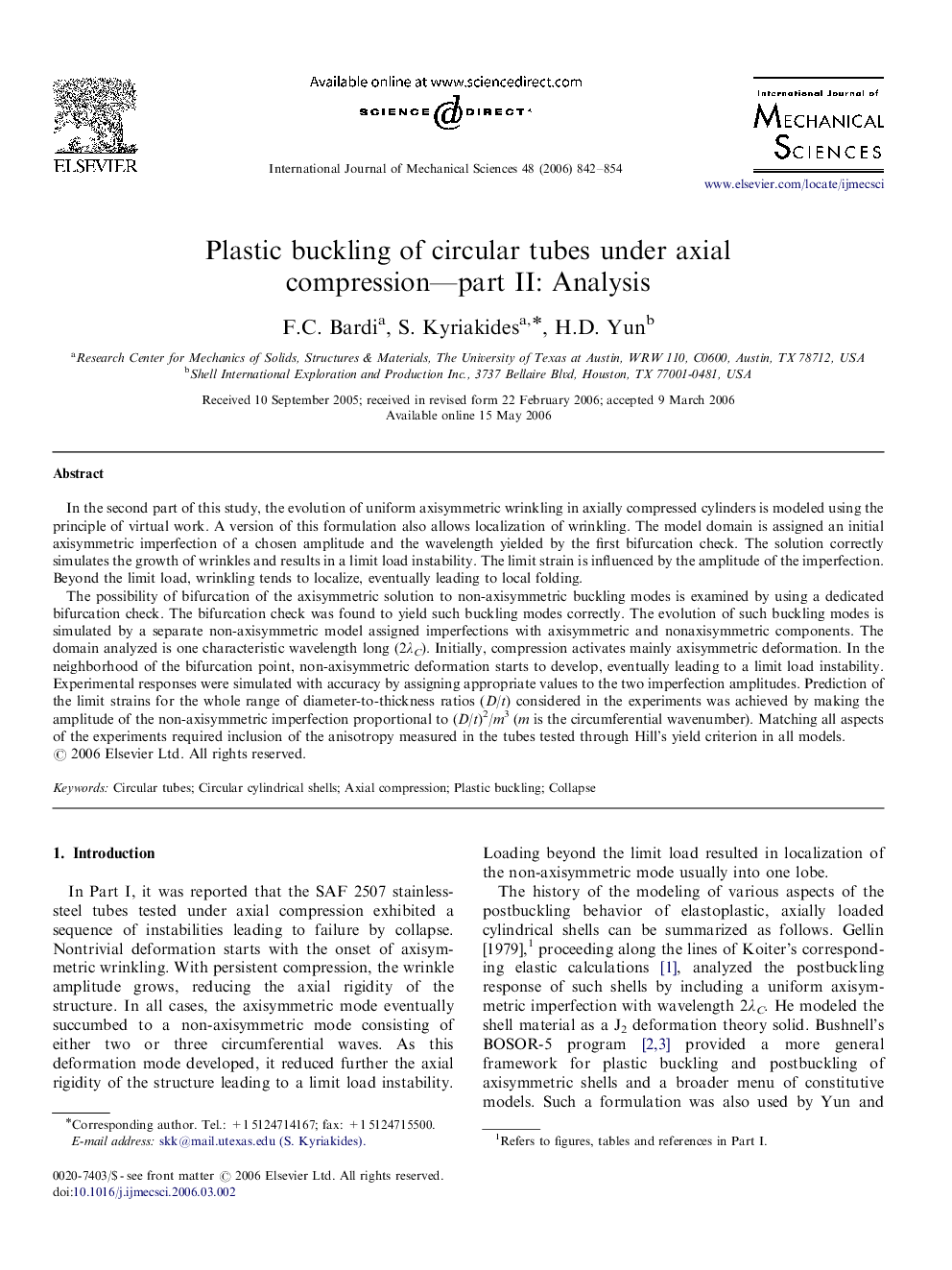| Article ID | Journal | Published Year | Pages | File Type |
|---|---|---|---|---|
| 783003 | International Journal of Mechanical Sciences | 2006 | 13 Pages |
In the second part of this study, the evolution of uniform axisymmetric wrinkling in axially compressed cylinders is modeled using the principle of virtual work. A version of this formulation also allows localization of wrinkling. The model domain is assigned an initial axisymmetric imperfection of a chosen amplitude and the wavelength yielded by the first bifurcation check. The solution correctly simulates the growth of wrinkles and results in a limit load instability. The limit strain is influenced by the amplitude of the imperfection. Beyond the limit load, wrinkling tends to localize, eventually leading to local folding.The possibility of bifurcation of the axisymmetric solution to non-axisymmetric buckling modes is examined by using a dedicated bifurcation check. The bifurcation check was found to yield such buckling modes correctly. The evolution of such buckling modes is simulated by a separate non-axisymmetric model assigned imperfections with axisymmetric and nonaxisymmetric components. The domain analyzed is one characteristic wavelength long (2λC). Initially, compression activates mainly axisymmetric deformation. In the neighborhood of the bifurcation point, non-axisymmetric deformation starts to develop, eventually leading to a limit load instability. Experimental responses were simulated with accuracy by assigning appropriate values to the two imperfection amplitudes. Prediction of the limit strains for the whole range of diameter-to-thickness ratios (D/t) considered in the experiments was achieved by making the amplitude of the non-axisymmetric imperfection proportional to (D/t)2/m3 (m is the circumferential wavenumber). Matching all aspects of the experiments required inclusion of the anisotropy measured in the tubes tested through Hill's yield criterion in all models.
